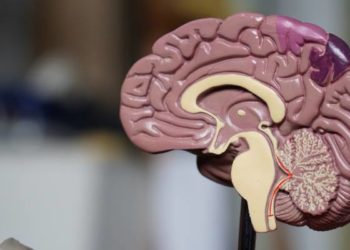Intracranial hemorrhage risk increased with simultaneous use of antidepressants and NSAIDs
1. Patients taking both antidepressants and non-steroidal anti-inflammatory drugs (NSAIDS) had an over 1.5 times increased risk of intracranial hemorrhage within 30 days of beginning to take the medications together than people taking antidepressants alone.
2. Different classes of antidepressants did not hold differing risks for intracranial hemorrhage.
Evidence Rating Level: 2 (Good)
Study Rundown: Antidepressants and NSAIDs, two of the most commonly prescribed medications in the United States, are each thought to increase the risk of abnormal bleeding. However, it is unknown what effect these medications have on intracranial hemorrhage. The purpose of this study was to determine the risk of intracranial hemorrhage with the combined use of antidepressants and NSAIDs. In a study of over 4 million Korean patients from 2009 to 2013, the risk of intracranial hemorrhage within 30 days was over 1.5 times higher in patients who used both antidepressants and NSAIDs together than for people who used antidepressants without NSAIDs. When different classes of antidepressants were evaluated, including tricyclic antidepressants, selective serotonin reuptake inhibitors, and serotonin-norepinephrine reuptake inhibitors, the risk of intracranial hemorrhage remained elevated. Interestingly, men who used both classes of medications had a higher risk than females did.
This study benefited from the use of a national database containing information on healthcare use and prescribed drugs for about 50 million Koreans, allowing data to be generalizable to at least the Korean population. In addition, the authors performed propensity score matching to eliminate baseline differences between cohorts. However, only patients who presented to a hospital with intracranial hemorrhage as a primary or secondary diagnosis were captured in the study, so it is possible that additional cases without overt intracranial hemorrhage were missed. It should be noted that the authors looked at a short time period, only 30 days after the beginning of drug usage, so a true longitudinal effect cannot be extrapolated. Overall, this study suggests that the combined use of antidepressants and NSAIDs may increase the risk of intracranial hemorrhage within 30 days of beginning the medications together. While the sample size is large, complete generalizability is not possible with these results. A more diverse patient population and prospective study design will be needed to validate these findings.
Click to read the study in BMJ
Click to read an accompanying editorial in BMJ
In-Depth [retrospective cohort]: This study looked to determine the effect of the combined use of antidepressants and NSAIDs on the risk of intracranial hemorrhage within 30 days of beginning to take the medications together. The authors looked at the Korean Health Insurance Review and Assessment Service database between 2009 and 2013. After performing propensity score matching between the antidepressant drug use groups with and without NSAIDs, a total of 4,145,226 cases were included. Within 30 days of beginning of the medications together, the risk of intracranial hemorrhage was higher in the group of patients taking both antidepressants and NSAIDs compared to those taking antidepressants without NSAIDs (hazard ratio 1.6, CI95% 1.32-1.85). No difference was observed on the risk of intracranial hemorrhage between different classes of antidepressants, including tricyclics, selective serotonin reuptake inhibitors, and serotonin-norepinephrine reuptake inhibitors. Men did, however, have a higher risk than female patients when taking both medications together (hazard ratio 2.6 [CI95% 1.93-3.42] vs. 1.2 [0.89-1.57]).
Image: CC/Wiki
©2015 2 Minute Medicine, Inc. All rights reserved. No works may be reproduced without expressed written consent from 2 Minute Medicine, Inc. Inquire about licensing here. No article should be construed as medical advice and is not intended as such by the authors or by 2 Minute Medicine, Inc.








